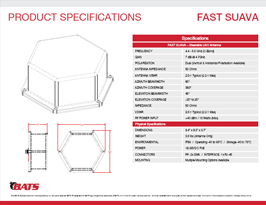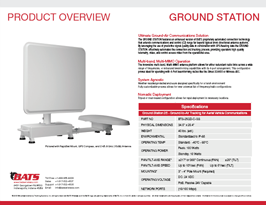
UAV Communication Systems enable extended range control and streaming of data and video
UAVs are composed of a variety of essential components. While all components harmoniously perform a specific purpose that contributes to operational flight, the most important component is the communications systems. UAV communications systems help drones and their operators to achieve their desired results. Without these systems, not only would unmanned flight be considered unobtainable, but would also make collecting and transmitting aerial visuals and communications data impossible.
As UAVs continue to position themselves as the preeminent aerial data collection platform across a wide variety of industries, their communications systems grow proportionally in importance. Without highly adaptable and reliable communications systems, operators are left at a stark disadvantage for obtaining aerial visuals and data. As it stands, RF communications are the most optimized solution for reliable drone communications systems. A combination of their small size, weight, minimized power consumption, and robust communications link makes them the most suitable solution for most civilian UAVs.
Civilian UAV communications systems typically operate on frequencies of 2.4 GHz and 5.8 GHz. UAV communications systems work by using one frequency to control the aerial vehicle from the ground via a remote pilot while the other frequency is used to beam data or relay First-Person View (FPV) video. By utilizing high-quality, reliable communications links, civilian UAVs are able to relay aerial visuals and data to those on the ground with ease, while still remaining in flight.
However, in defense applications, different types of drones are implemented. Defense drones vary greatly from civilian UAVs, as their missions are frequently longer duration or require striking capabilities in addition to providing aerial visuals of the battlefield below. One concern in the use of drones in defense applications is the occurrence of signal jamming. When signal jamming is used, this cuts the remote pilot and operations base off from visuals of what the drone is seeing. While it seems like a disastrous scenario, most defense drones are engineered to return to base after a loss of communications contact. Defense operators have found another solution to potential signal jamming – redundant on-board navigation systems that don’t rely on GPS. By eliminating available GPS data, jamming becomes a infrequent occurrence, allowing defense drones to complete their missions and return to base safely.

